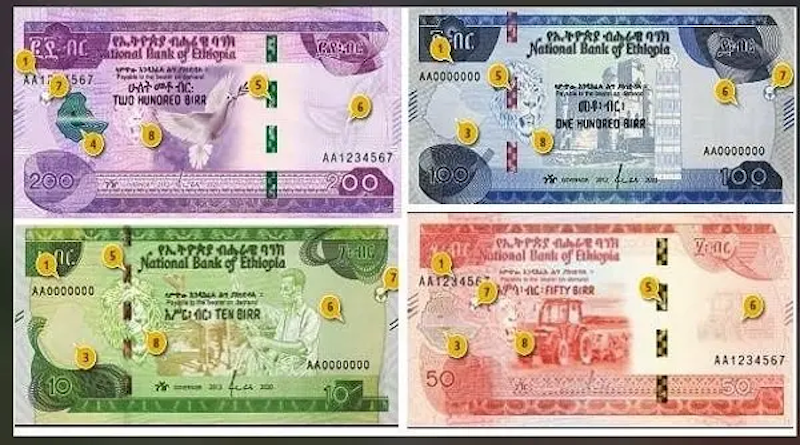Earlier in the year and more specifically on July 28th July 2024, Ethiopia made a historic move. It introduced a new macroeconomic reform process, moving away from a crawling peg exchange rate regime for the Ethiopian Birr against the US Dollar to a market-based foreign currency system.
Since then, the Ethiopian Birr has taken on a downward spiralling fall to register most recently 140 Birr to the US Dollar in the illegal market compared to the official 116.7 Birr as of October 12, 2024, in comparison to 57 Birr on the date the new system was introduced.
This widening gap is not comfortable for the economy and presents a serious challenge to both the business community of the country and the consumers. Obviously, the formal financial system has been or is unable to meet the demands of the market and more especially for foreign currency, where now most businesses and people rely on the black market as a source of hard currencies, for their needs, mostly the US Dollar. (Read Addis Insight – Ethiopia’s Black-Market Hits 140 Birr to the Dollar: A Growing Crisis in Foreign Exchange on October 12th, 2024).
This has impacted the economy in more ways than one. The inflation in the economy has risen and is reported to be above 30% resulting, in the main, from increasing costs of goods and services. Importing businesses pass on the cost to consumers, which cause prices to consumers and hence inflation to rise.
This has also caused businesses dependent on imported goods to scale back and reduce their imports for lack of availability of hard currency or pass on the increased costs to the consumers as noted earlier. This has led to a distrust in the formal banking system which is unable to cater for the needs of both the business community and ordinary people. Most seek to meet their needs from the informal and illegal market, which only further undermines the effectiveness of the formal and official exchange rate.
Another side effect of the issue is the growing inequality between those who are able to access foreign currencies and those who have no access, whereas the former take advantage of the opportunities that have presented themselves and the others suffer from the increased costs and hence higher prices of goods and services.
The macroeconomic reforms introduced in July with the assistance of the IMF and the World Bank were designed to introduce a floating exchange rate system and use interest as a policy tool. The package was also designed to make the central bank of the country an independent institution. It would seem that this has failed so far. Ethiopia was promised a financial support package of some US$ 20 billion by the two multilateral institutions, with Ethiopia expecting to save some US$ 5 billion from its credit restructuring after the deal was signed.
The package was split as follows:
- A four-year $3.4 billion IMF support package to Ethiopia, with $1 billion disbursed immediately.
- A World Bank approved $1.5 billion financing.
- An additional $16.6 billion in financial support over the next three years.
The gap between the official rate and the illegal market rate may widen further without significant intervention from the central bank, which then would be coming against the very package of macroeconomic reforms introduced in July.
The reforms were expected to enhance the foreign exchange availability and stabilize the exchange rate but instead the gap has only widened further and did not deliver the expected results so far. Ethiopia’s financial infrastructure is currently in a fix and is moving towards an unexpected direction.
All the reform process as proposed would have been good for a stable environment, economy and a country at peace, which Ethiopia is currently not. No wonder the Birr is falling irrespective of the reasons, as the mindset of the ruling elite are more involved in wars both within the country and outside. The conflict in the Amhara state has worsened and the Tigray situation is not improving. It may be leaning towards further disturbances in that region. A new civil war is brewing in the Somali State which appears to have been the only stable region of the country, although traditionally it caused most headaches for ruling parties in Addis Ababa.
All these crises seem to be worsening by the day. International efforts to curb the violence and make peace in the country have all failed so far. All diplomatic efforts seem to be falling on deaf ears in the country and the conflicts show no signs of abating. As usual aid organizations continue their wailings and cries that they are unable to deliver relief supplies to those most in need.
Ethnic politics are difficult to handle, and the economic reform processes will remain hostage to the country’s ethnic wars. The Amhara know that their defeat will lead them to oblivion and so do the Oromo and the Tigray, the traditional power brokers of the country. The Somalis will find their way back to join, perhaps, their homeland, Somalia or remain an independent country. But Ethiopia seems to be on the verge of a total collapse. “The too big to splinter” view of many parties no longer holds. Bigger countries like the Soviet Union which were held through force and fear had split into their original countries. An organized dismantling of the country into its original constituent parties would probably be the best possible option for the country. It is only then that perhaps macroeconomic reform process will make sense for the resultant constituent parties and/or countries.






